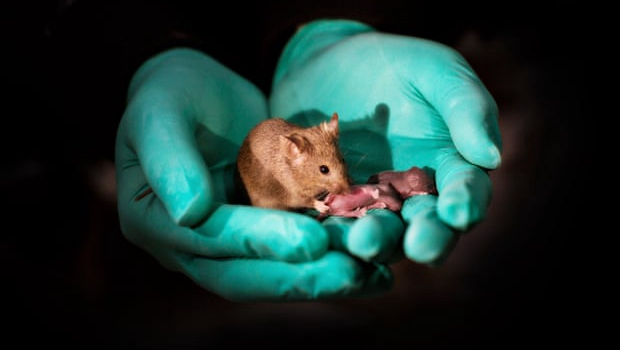
Tech & Sci
16:20, 12-Oct-2018
Chinese scientists breed pups from same-sex mice pairs
Updated
15:41, 15-Oct-2018
Alok Gupta

A new breakthrough experiment is paving the way for same-sex couples to conceive children of their own.
Two female mice were able to make an offspring without the need of a male, in a genetic experiment carried out by researchers from the Chinese Academy of Sciences.
Scientists also successfully bred a baby mouse from two male mice, but the pups could not survive more than 48 hours.
"It took three years of intensive genetic engineering to achieve this feat," Li Wei, senior author of the research titled "Generation of Bimaternal and Bipaternal Mice from Hypomethylated Haploid ESCs with Imprinting Region Deletions," told CGTN.
The research was published in the journal Cell Stem Cell.
"It's a long way to replicate the experiment among humans, but there is a possibility that it can be achieved. However, there are huge ethical concerns on the issue," Li added.
Reptiles, fish, and amphibians do it, and now mammals too
Among mammals, maternal and paternal genetic materials are required for reproduction. But some species of snakes, fishes and reptiles can have babies on their own.
For the scientific community, it was a challenge to understand what gene alterations are required to ensure the reproduction of two same-sex mammals.
In 2014, a team of Japanese researchers bred a genetically-modified mouse named Kaguya with two moms. The Chinese researchers took the experiment to the next level by ensuring a full-term birth from a pair of male mice.
"In same-sex births, there is a huge possibility of congenital disabilities. There is always a possibility of low metabolism or behavior defects. The newborn mouse in our lab has no such anomaly," Li added.
To ensure a same-sex couple of female mice was able to breed, researchers extracted an egg from one mouse and a haploid embryonic stem cell from the other and paired them. Merely matching is not enough to ensure the birth, so in order to remove troublesome imprinting, they used CRISPR-Cas9 to snip it out.
They produced 29 live mice from 210 embryos.
Baby from two dad mice is risky
The process of ensuring birth among male couples is not only tough but also risky.
To breed bi-paternal mice, researchers took a sperm, a male haploid embryonic stem cell, and an egg with genetic information removed. The process also required the removal of seven genes.
The two dads were able to give birth to 12 pups. But only two survived for a few hours. "Bi-paternal births require more study in the future," Li added.
Bi-maternal mice grew up to successfully give birth to their own offspring.
"We tried to find out whether more normal mice with two female parents or even mice with two male parents could be bred using haploid embryonic stem cells with gene deletions," said another senior author of the study, Zhou Qi.
(Top Image: Using gene editing, Chinese researchers were able to breed mice with two moms, and these bi-maternal mice went on to have their own offspring. /Photo courtesy of Leyun Wang)

SITEMAP
Copyright © 2018 CGTN. Beijing ICP prepared NO.16065310-3
Copyright © 2018 CGTN. Beijing ICP prepared NO.16065310-3